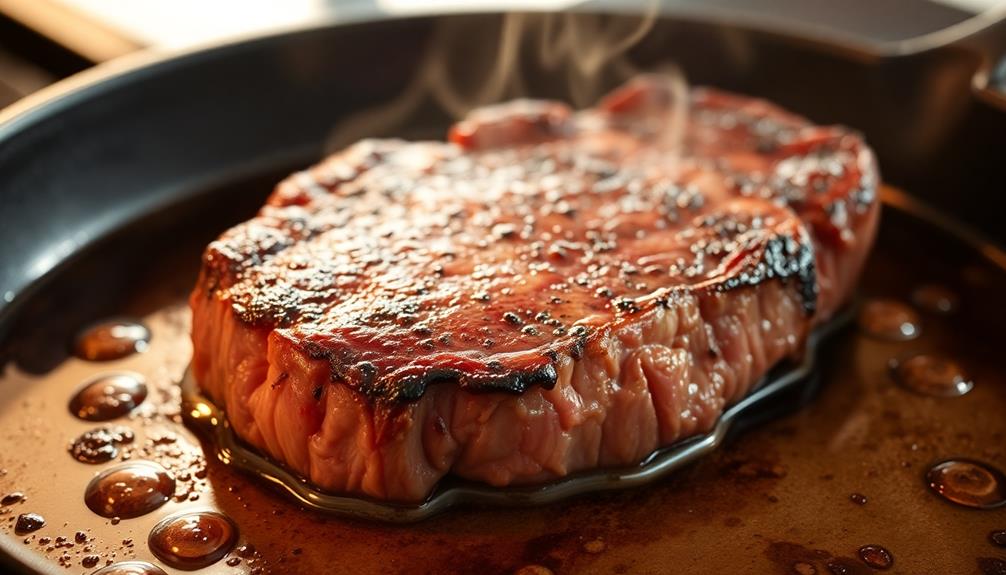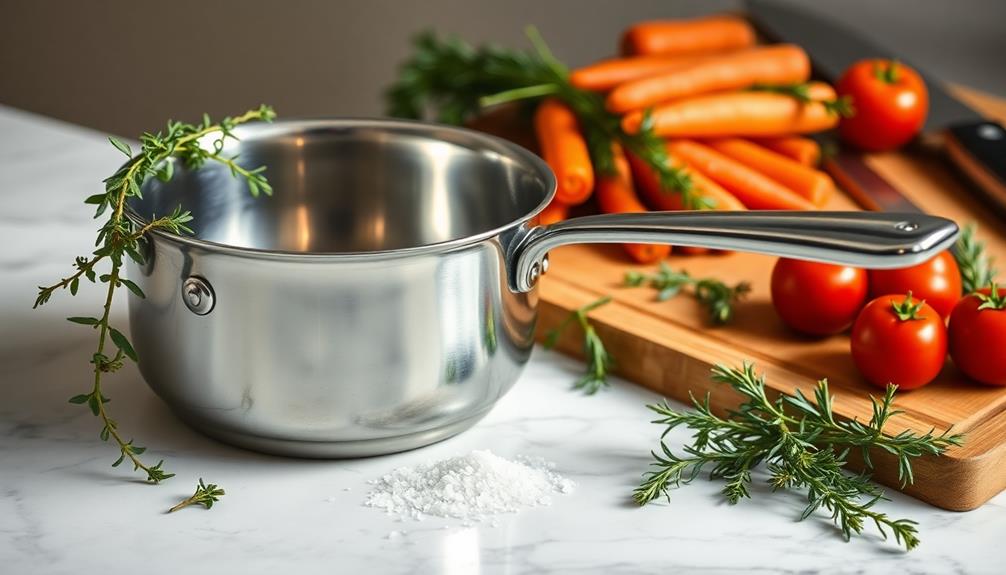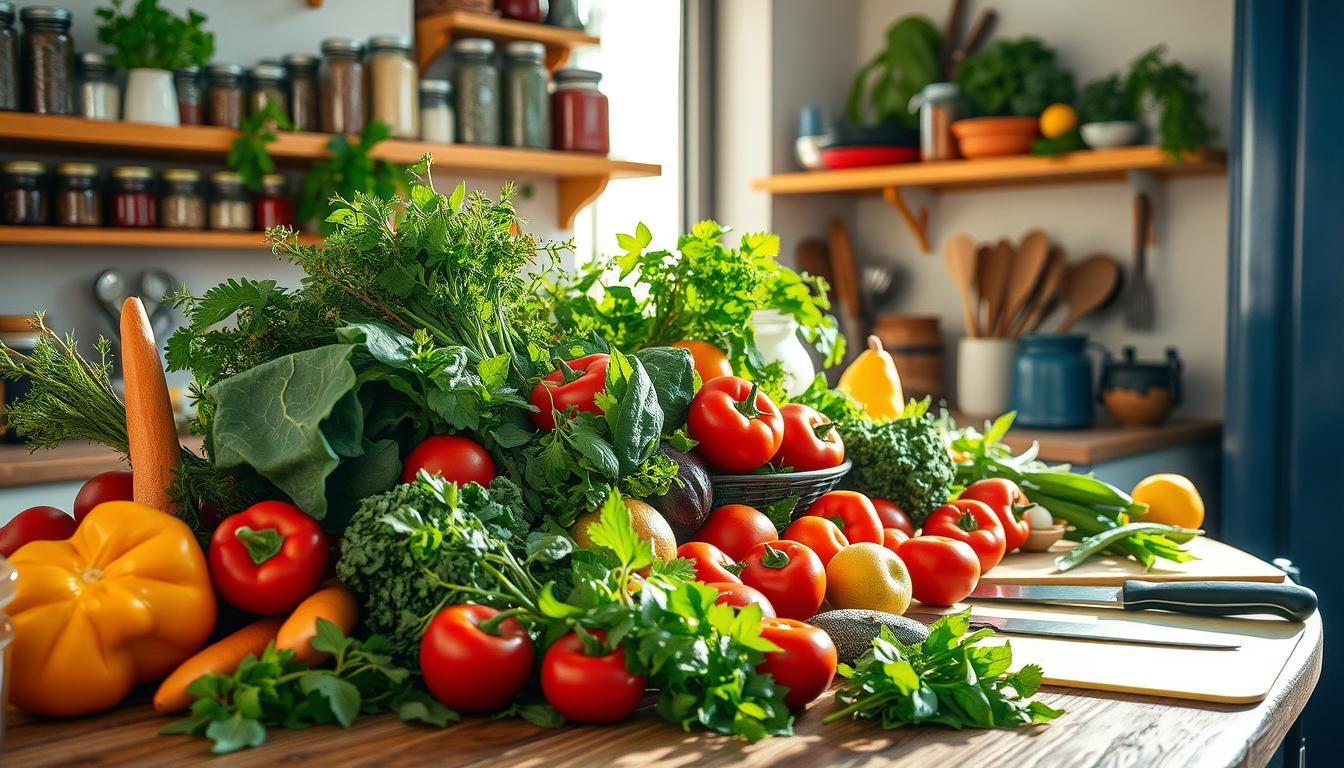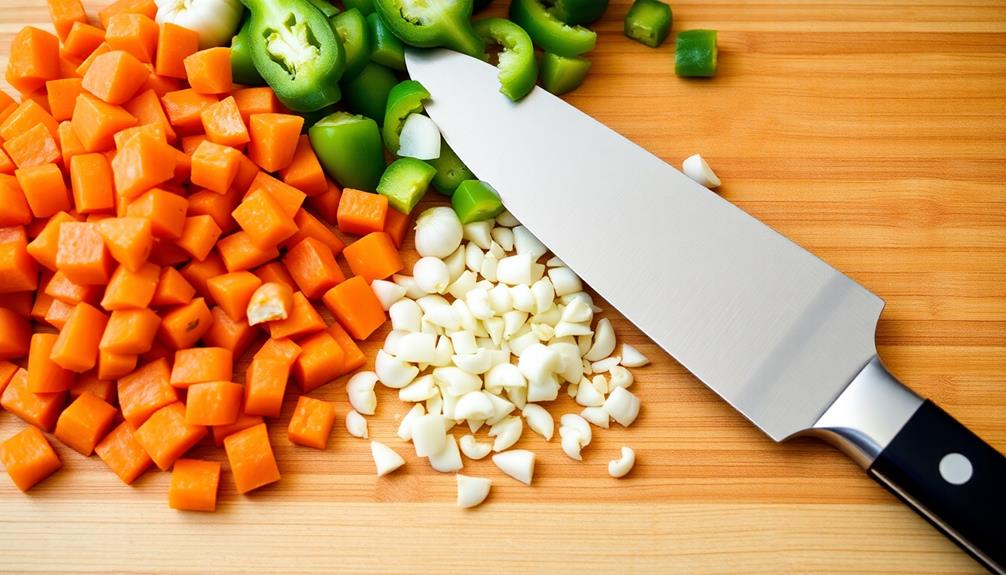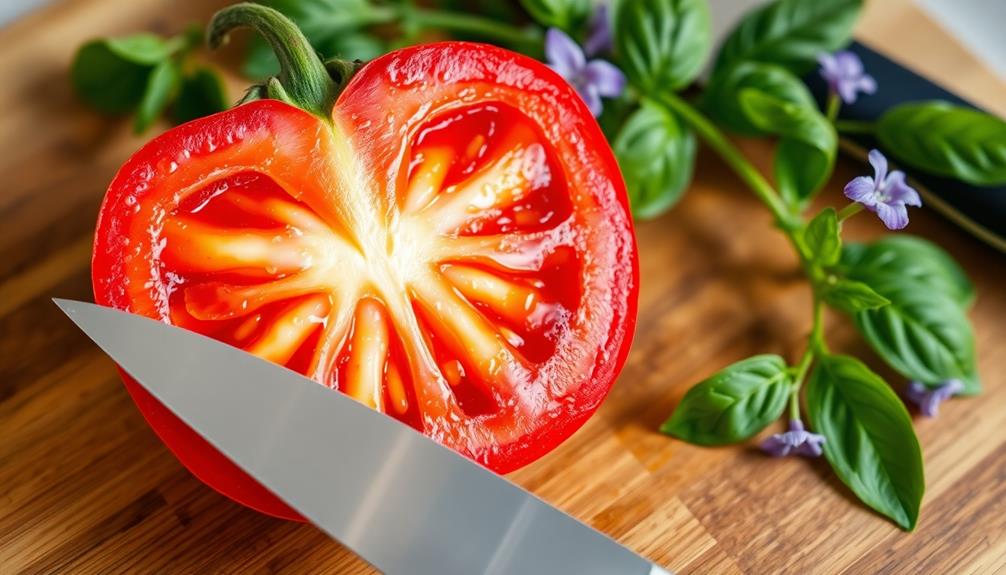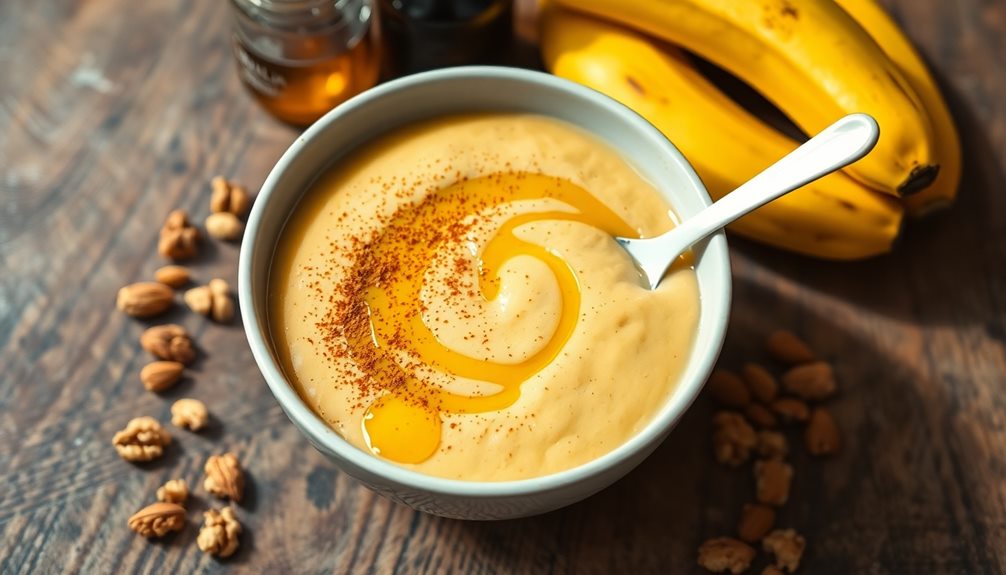Step into the vibrant culinary world of tagine cooking, an ancient Moroccan tradition that'll transport your tastebuds on a flavor-packed adventure. Slowly simmered in a specialized clay pot, these aromatic stews meld tender meats, fresh veggies, and signature spices for a mouthwatering one-pot meal. You'll be amazed at how the dome-shaped lid traps steam, enhancing the rich, complex flavors. Whether you opt for lamb, chicken, or even chickpeas, tagine cooking offers endless possibilities to explore the diverse tastes of North Africa. Curious to discover more about this captivating culinary heritage?
Key Takeaways
- Tagine cooking is a traditional North African method of slow-simmering stews in a clay pot to infuse flavors and tenderize meats.
- The dome-shaped lid of the tagine pot traps steam, creating a moist and flavorful cooking environment.
- Tagine recipes typically feature a variety of Moroccan-inspired spices, vegetables, and proteins, offering versatility to the dish.
- Patience and attention to detail are essential in tagine cooking, as the slow simmering process allows the flavors to meld together.
- Tagine meals are often served over couscous or with warm pita bread, creating a complete and satisfying one-pot meal.
History
Where did tagine cooking originate? Tagine cooking traces its roots back to ancient Morocco, where nomadic tribes used this unique cooking method for centuries.
These travelers would carry their tagine pots, made of clay, with them as they journeyed across the rugged North African landscape. The tagine's dome-shaped lid traps steam, allowing the ingredients to slowly simmer and meld together, creating incredibly flavorful and tender dishes.
Over time, the tagine became an integral part of Moroccan cuisine and culture. As the country's culinary traditions evolved, the tagine remained a beloved cooking tool, used to prepare a variety of meat, vegetable, and fruit-based stews.
Today, the tagine continues to be a cherished symbol of Moroccan heritage, showcasing the region's rich history and the enduring power of its traditional cooking methods.
Recipe
Tagine is a traditional North African dish named after the clay pot in which it's cooked. The slow cooking process allows the flavors to meld together, creating a rich and aromatic dish. Tagine can be prepared with a variety of meats, vegetables, and spices, making it a versatile and flavorful option for any meal.
The key to a successful tagine is patience and attention to detail. The slow, gentle cooking method ensures that the ingredients are tender and the flavors are well-developed. Whether you're a seasoned cook or trying tagine for the first time, this recipe will guide you through the process step-by-step.
Ingredients:
- 1 lb boneless lamb or chicken, cut into 1-inch pieces
- 1 large onion, diced
- 3 cloves garlic, minced
- 1 tsp ground cumin
- 1 tsp paprika
- 1 tsp ground cinnamon
- 1/2 tsp ground ginger
- 1/4 tsp cayenne pepper
- 1 cup chicken or vegetable broth
- 1 14-oz can diced tomatoes
- 1 cup pitted green olives
- 1 cup cooked chickpeas
- 2 tbsp chopped fresh cilantro
To prepare the tagine, start by browning the meat in a large skillet over medium-high heat. Once the meat is browned, add the onion and garlic and cook until fragrant, about 2-3 minutes.
Stir in the spices and continue cooking for an additional minute. Add the broth, tomatoes, olives, and chickpeas, and bring the mixture to a simmer. Reduce the heat to low, cover the skillet, and let the tagine simmer for 45-60 minutes, or until the meat is tender and the flavors have melded together.
When the tagine is ready, stir in the chopped cilantro and serve immediately, either over cooked couscous or with warm pita bread. The slow-cooked, aromatic flavors of the tagine are sure to delight your taste buds and leave you craving more.
Cooking Steps
First, sear the meat in your trusty tagine pot to get that delicious caramelized flavor.
Then, add your veggies and let them simmer until they're nice and tender.
Don't forget to toss in those aromatic spices at the end – they'll really take your dish to the next level.
Serve it all over a bed of fluffy couscous or fragrant rice, and get ready for an amazing Moroccan feast!
Step 1. Sear Meat in Tagine Pot
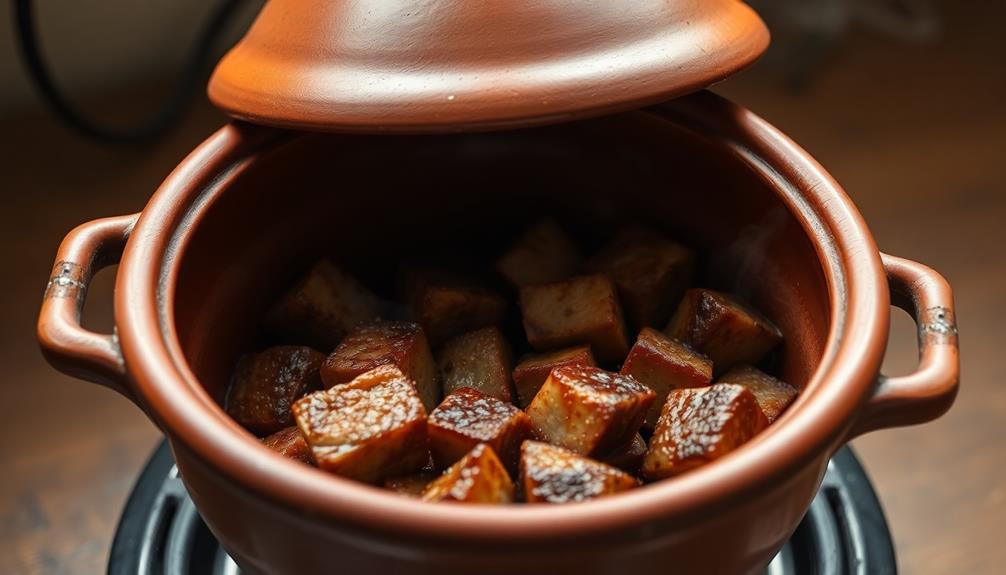
Once you have the tagine pot ready, it's time to sear the meat. This step is crucial for building flavor in your Moroccan-inspired dish. Start by patting the meat dry with paper towels. This helps the meat brown better when you add it to the hot pot.
Next, season the meat generously with salt and pepper. You want to make sure every piece is well-seasoned.
Now, heat a bit of oil in the bottom of your tagine pot over medium-high heat. Once the oil is hot, add the meat in a single layer. Let it sizzle and brown on the first side, which should take 2-3 minutes.
Flip the pieces and brown the other side too. You may need to work in batches to avoid crowding the pot. The key is to get a nice, deep browning on the meat. This caramelized crust will add tons of flavor to your final dish.
Once all the meat is seared, you're ready to move on to the next steps in your tagine cooking journey!
Step 2. Add Vegetables
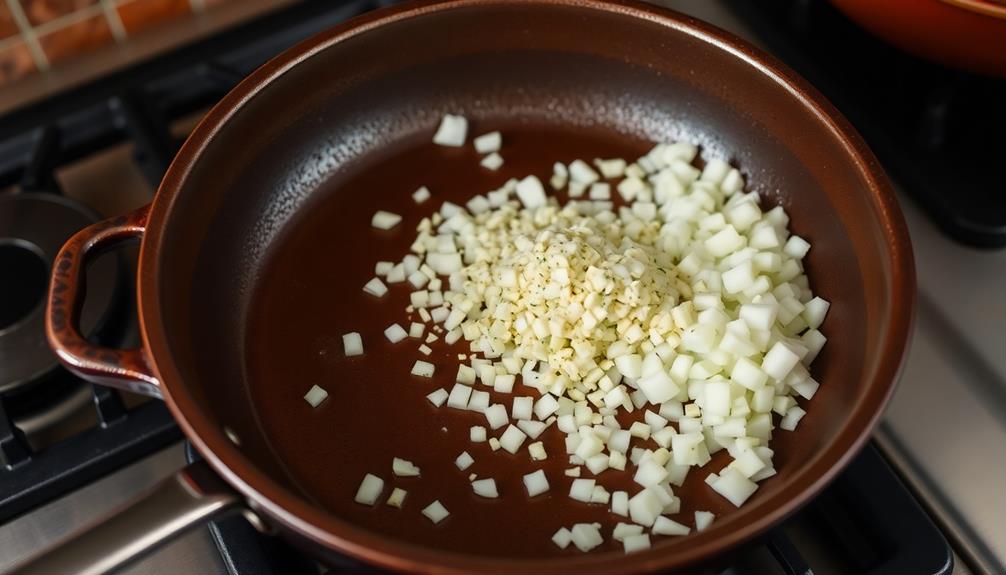
With the meat seared to perfection, it's time to introduce the aromatic vegetables that will infuse your tagine with incredible flavor.
First, thinly slice a large onion and mince a few cloves of garlic. You'll want to add these to the pot, sautéeing them until they're soft and fragrant.
Incorporating essential oils like lavender oil, known for its calming properties, can create a soothing atmosphere as you cook.
Next, chop up some carrots, potatoes, and zucchini into bite-sized pieces. Toss these colorful veggies right into the pot, making sure they're evenly distributed.
Don't forget to add a handful of fresh herbs like parsley or cilantro – they'll provide a lovely finishing touch.
As the vegetables simmer away, they'll absorb all the rich, spicy flavors from the seared meat.
Before long, your kitchen will be filled with the mouthwatering aroma of an authentic Moroccan tagine.
Get ready for a truly exceptional one-pot meal that's bursting with vibrant flavors and textures.
Step 3. Simmer Until Vegetables Are Tender
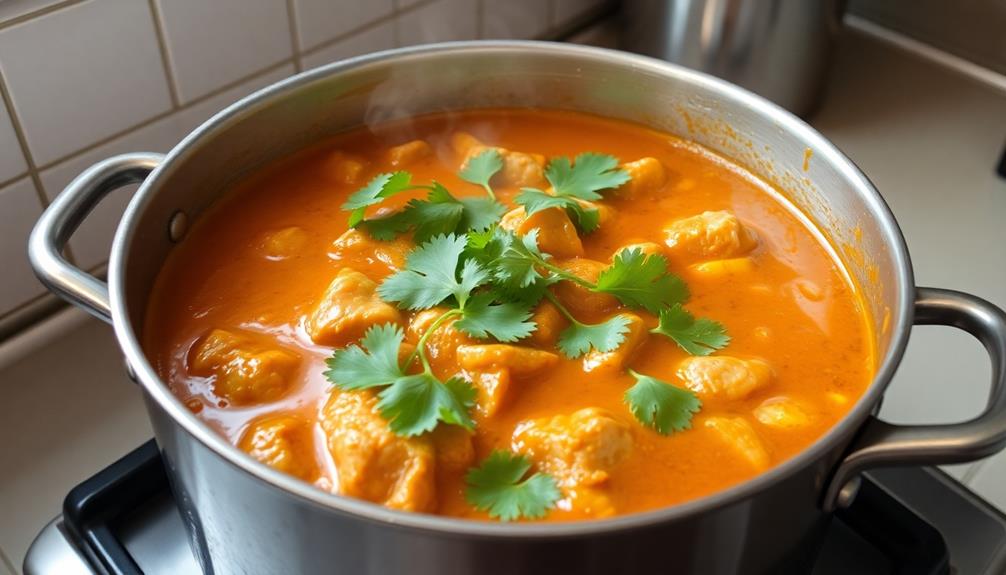
Once the aromatic vegetables have been added to the pot, allow the tagine to simmer gently over medium heat. This slow cooking process is key to developing the deep, complex flavors of a traditional Moroccan tagine.
As the dish simmers, the vegetables will gradually soften and release their natural juices, creating a rich, flavorful broth. A clean and organized kitchen can enhance your cooking experience, contributing to better focus and minimized stress a healthier lifestyle.
Be sure to stir the pot occasionally, ensuring the vegetables cook evenly. This gentle simmering can take anywhere from 30 minutes to an hour, depending on the type and quantity of vegetables used.
Keep a close eye on the pot, adding a splash of broth or water if the liquid level gets too low. The vegetables should be tender but still hold their shape when the tagine is ready.
Once they've reached the perfect texture, your Moroccan-inspired one-pot meal is well on its way to perfection. Anticipate the delightful aromas filling your kitchen as the tagine simmers away.
Step 4. Add Aromatics

After the vegetables have had a chance to simmer and become tender, it's time to add the aromatic spices and herbs that will infuse your tagine with its signature Moroccan flavors.
Reach for your ground cumin, paprika, cinnamon, and ginger. These warm, earthy spices will lend depth and complexity to the dish. Don't forget the fresh cilantro or parsley too – their bright, herbaceous notes will balance the richness of the stew.
Sprinkle the spices over the simmering vegetables and give everything a good stir. Let the aromas fill your kitchen as the flavors mingle and develop.
You can also add a pinch of saffron, if you have it, for its distinctive flavor and vibrant color. The key is to let the aromatics gently infuse the tagine, allowing the complex layers of taste to emerge.
Step 5. Serve Over Couscous or Rice
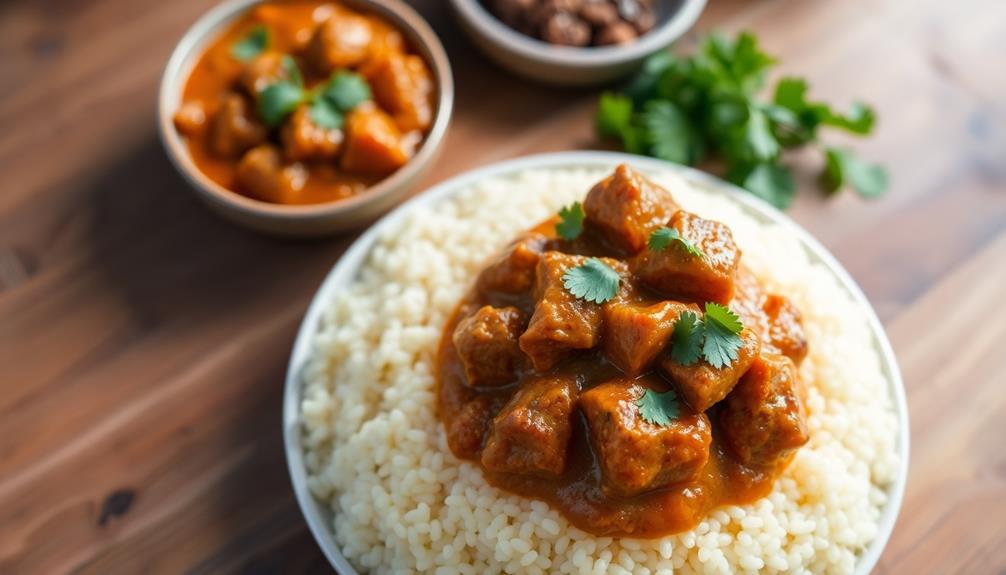
Tagines are traditionally served over a bed of light, fluffy couscous or fragrant steamed rice. Couscous is a tiny, pasta-like grain that's oh-so-easy to prepare. Simply fluff it up with a fork and you're ready to go!
Rice, on the other hand, adds a lovely, subtlety to the dish. Try basmati or jasmine rice for an authentic Moroccan flair.
Spoon the saucy tagine over your chosen starch, making sure to get all those delectable chunks of meat, vegetables, and aromatic spices. The grains will soak up the flavors beautifully.
For an extra special touch, sprinkle with chopped fresh herbs like cilantro or parsley. Toasted nuts, such as almonds or pistachios, also make a wonderful crunchy topping.
Serve your tagine immediately while it's piping hot. The combination of the warm, fragrant stew and the fluffy, flavorful base is simply irresistible. Get ready for your taste buds to take a trip to Morocco!
Final Thoughts
With the intricacies of tagine cooking now explored, consider the countless possibilities that await your culinary experimentation. With its distinctive conical lid and slow-cooking method, the tagine opens up a world of flavor combinations that are both comforting and exotic. Much like casserole recipes for onedish meals, tagines offer a convenient and satisfying way to bring together diverse ingredients in perfect harmony. Whether you’re simmering tender meats, savory vegetables, or fragrant spices, each dish becomes a celebration of taste and tradition.
The beauty of tagine dishes lies in their versatility – you can venture beyond the traditional recipes and unleash your creativity. Why not try blending different spices or incorporating unique ingredients to craft your own signature tagine? The options are truly limitless.
As you continue your tagine journey, don't be afraid to experiment and embrace the process of discovery. Each new recipe is an opportunity to learn, grow, and expand your culinary horizons.
Savor the aromas, textures, and flavors that emerge from your tagine, and share your creations with family and friends. The joy of tagine cooking is in the exploration, the sharing, and the celebration of Moroccan-inspired one-pot wonders.
Frequently Asked Questions
Can I Use a Slow Cooker Instead of a Tagine Pot?
You can certainly use a slow cooker instead of a tagine pot. The slow cooker's enclosed environment and low, steady heat will help you achieve the same flavorful, tender results as cooking in a traditional tagine.
What Side Dishes Pair Well With Traditional Moroccan Tagine Dishes?
You can pair traditional Moroccan tagine dishes with a variety of side dishes. Consider serving couscous, flatbread, roasted vegetables, or a fresh salad to complement the rich, complex flavors of the tagine.
Are There Any Vegetarian or Vegan-Friendly Tagine Recipes?
Yes, there are plenty of delicious vegetarian and vegan-friendly tagine recipes. You'll find aromatic vegetable stews featuring chickpeas, lentils, or roasted root veggies – perfect for a flavorful meatless Moroccan-inspired meal.
How Long Do Leftover Tagine Dishes Last in the Refrigerator?
Leftover tagine dishes typically last 3-4 days in the refrigerator. Make sure to store them in an airtight container, and you can reheat them on the stove or in the microwave when you're ready to enjoy them again.
Are There Any Shortcuts to Reduce the Prep Time for Tagine Cooking?
To reduce prep time for tagine cooking, you can take some shortcuts. Use pre-chopped vegetables, canned tomatoes, and dried spices. You can also marinate the meat ahead of time to speed up the cooking process.

